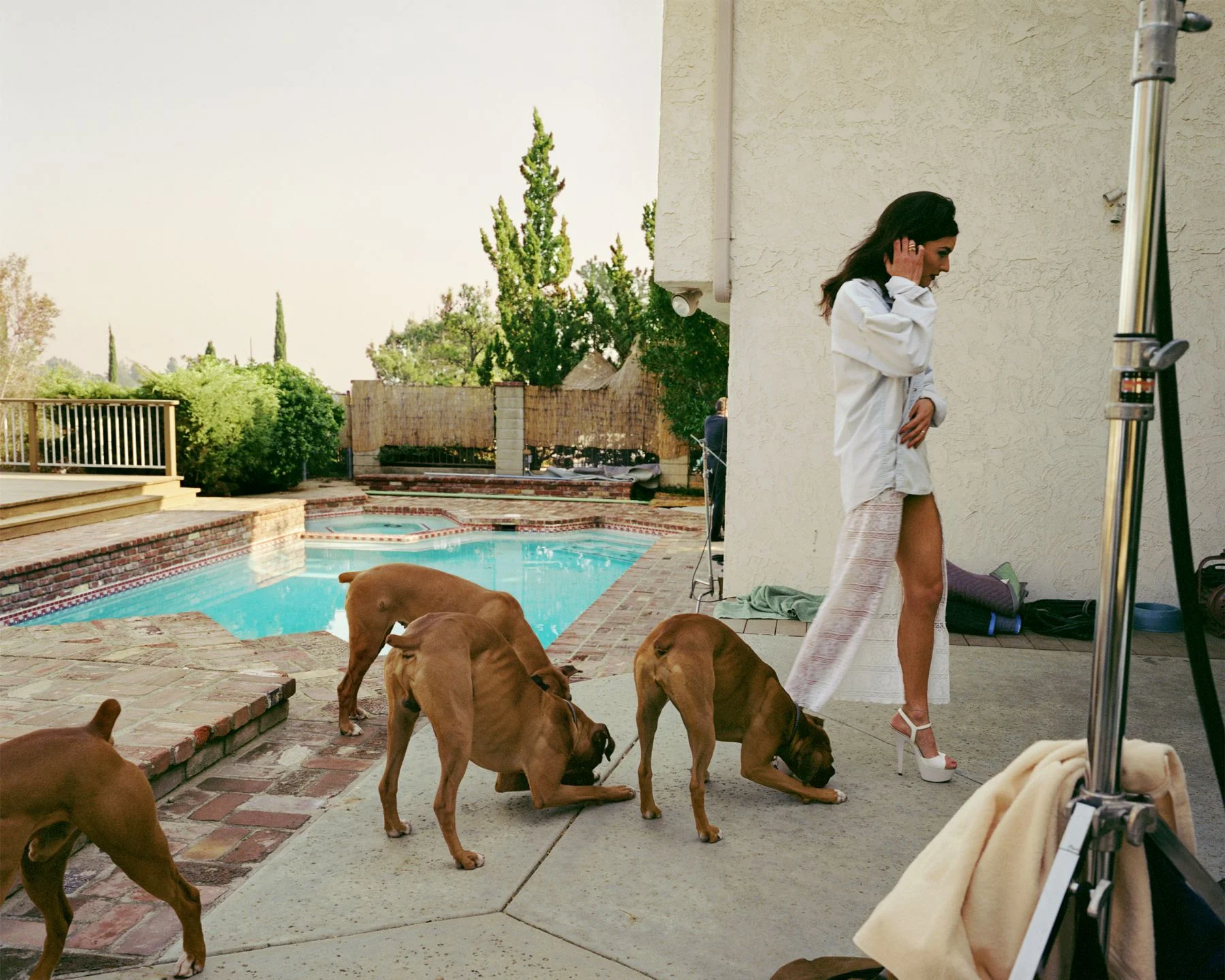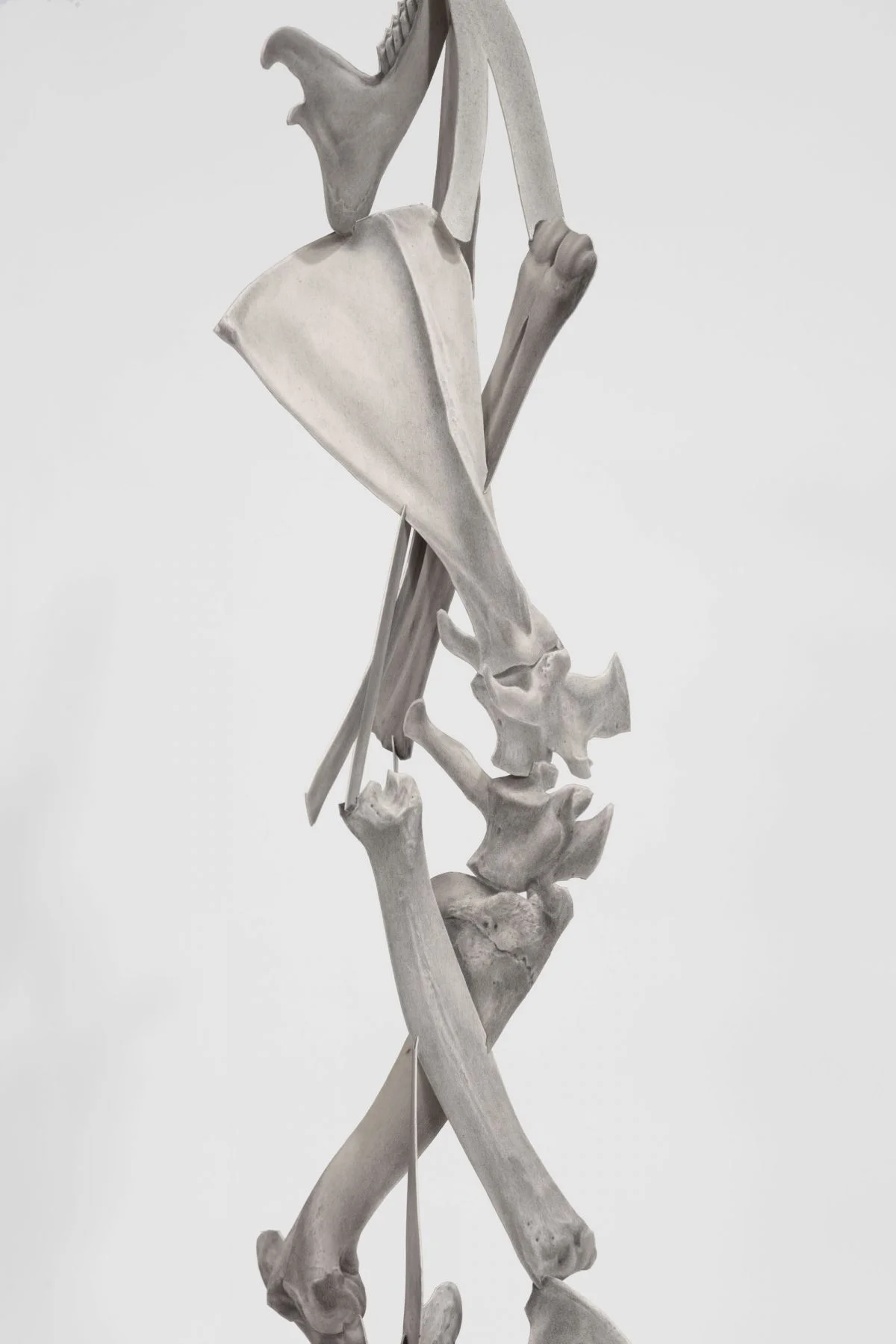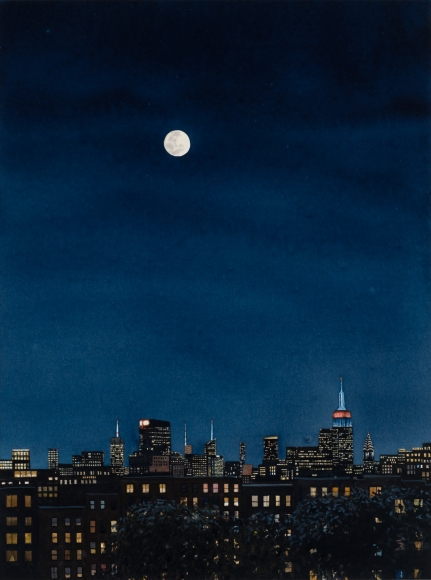Jonathan Gardner
Desert Wind
New York, 121 West 27th Street
Jonathan Gardner presents fantastical, layered tableaus of the quotidian for Desert Wind, his second exhibition at Casey Kaplan. Oil paint is rendered in bizarre, flattened compositions that are suspended between art historical motifs culled from a variety of sources, and uncanny manifestations of the artist’s mind.
A studied staging of space blurs the hierarchy of components in each composition, which Gardner translates into the picture plane through a leveling of figures and objects. Forms are grounded in a hyper-stylized environment, based within a narrative that is never fully revealed. The largest work in the show, titled “The Ballroom”, is an ensemble painting of six figures referenced in other works by the artist. Rather than interfacing in the mis-en-scène, the players form a pastiche of independent scenes. As the music plays, each character is engaged in his or her own thoughts.
Imparting equal attention to all areas of the canvas, elements such as the bend of a table leg, an uncanny food-like object or a window shaped like a vase are treated with similar degrees of deference to the curves of the body, eroticizing the inanimate and the living. “The Waiter” holds a tray of bizarre delicacies, appearing to morph into his platter, creating a Braque-esque guéridon. In “Pleasure Point”, a man and woman are captured in an amorous state. Gardner distills their embrace, stimulating the surroundings of the room in reflection of the couple’s admiration for one another. A curvaceous vase sits at the edge of the painting. Overhead, a curious plant protrudes into the room from outside.
Each carefully composed angle and crisply delineated line reveals an obsessive perfectionism at work. This perfectionism, and doubt, involves a perpetual reworking of subjects, such as the reclining woman, which Gardner recasts in a variety of contexts. The rendering of the female nude pictured in “Visions of the Emerald Beyond” is commonplace for the artist in its atypical sensibility. Figures often contain anatomical distortions, compressions and elongations. Although Gardner was trained to study the figure from life at the School of Visual Arts, his interests favor poetics over reality. The intent is not anatomical, but at the service of a rhythmic geometry.
Seeking balance in each painting, not only through a deliberate placement of form, color and weight, but through tools of perspective, Gardner considers the substance of image-making. The nude in the aforementioned work might slip off the canvas or retreat deeper into the vanishing point, the surreal beach scene further demarcated by the image within the image. The solitary guitarist in “Desert Wind” is positioned off-center with a skewed horizon as her backdrop and a table in the foreground. Each carefully placed element furthers the general cohesion of the composition, where to alter anything would entail a visual collapse of the whole.
on view until April 20, 2019






